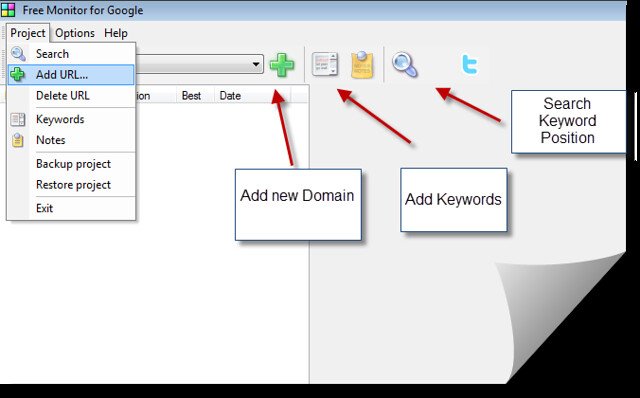Step into the realm of the invisible, where the power of weaving words and ideas becomes the alchemy of digital visibility. In the vast landscape of search engine optimization (SEO), content clusters have emerged as the alluring enigma that holds the key to unlocking organic traffic. But amidst this labyrinthine maze, lies a potent strategy often overlooked: the art of internal linking. Picture an intricate web of interconnected threads, silently working their magic to enhance your online presence. In this article, we delve into the mesmerizing world of invisible weaving, unraveling the mysteries and unveiling the secrets behind harnessing internal links for SEO content clusters. Prepare to embark on a journey through the enchanting depths of the digital realm, where words transcend their mere existence and transform into powerful pathways to success.
Table of Contents
- Understanding the Power of Internal Links in SEO Content Clusters
- Unveiling the Art of Invisible Weaving: Strategically Linking Your Content
- Optimizing Internal Links for Enhanced SEO Performance
- Proven Techniques to Leverage Internal Links for Higher Search Rankings
- Q&A
- In Summary

Understanding the Power of Internal Links in SEO Content Clusters
Internal links play a crucial role in SEO content clusters, and harnessing their power can significantly impact your website’s visibility and ranking on search engines. Much like an invisible thread, these internal links weave through your site’s pages, connecting them and forming a cohesive structure that is easily navigable by both search engine bots and human visitors. So, how exactly do internal links work their magic?
1. Enhanced Navigation: Internal links act as a roadmap, guiding users throughout your website. They provide clear paths that assist visitors in finding relevant content effortlessly. By linking related articles, blog posts, or product pages together, you create a user-friendly experience that enables your audience to delve deeper into your site and discover more valuable information.
2. Improved User Experience: Internal links not only simplify navigation, but they also enhance the overall user experience. When visitors can seamlessly move from one page to another, they are more likely to stay on your site longer and engage with your content. It’s like having a well-organized library, with each book leading you to another fascinating chapter.
3. Boosted Crawling and Indexing: Search engine bots are constantly crawling the web to discover and index new pages. Internal links give them a clear path to follow, ensuring that all your content gets noticed. By incorporating relevant internal links throughout your site, you make it easier for search engines to understand the hierarchy and importance of your pages, ultimately improving your chances of ranking higher in search results.
4. Increased Authority and Relevance: When you link from one page to another within your website, you are essentially endorsing that linked page. By strategically linking to high-quality, authoritative content, you establish your own website as a reputable source of information. Additionally, internal links signal to search engines that your content is interconnected and cohesive, making it more likely to be seen as relevant and valuable.
By sufficiently leveraging the power of internal links within your SEO content clusters, you can create a well-structured website that not only pleases search engine algorithms but also engages and delights your audience. So, don’t underestimate the invisible weaving of internal links – it holds the potential to elevate your website’s visibility, authority, and overall success.
Unveiling the Art of Invisible Weaving: Strategically Linking Your Content
In the world of SEO, there is a powerful technique known as invisible weaving – the art of strategically linking your content through internal links. Just like a skilled weaver creating a beautiful tapestry, incorporating internal links effectively can bring cohesiveness and structure to your website, maximizing its potential for visibility and search engine optimization.
1. Enhancing User Experience: Internal linking is not just about improving search engine rankings, it also plays a vital role in enhancing the user experience on your website. By strategically placing relevant internal links throughout your content, you can guide visitors to related information, making their journey on your site seamless and intuitive. This not only keeps users engaged but also increases the chances of them exploring more of your content, ultimately leading to higher conversion rates.
2. Establishing Content Clusters: In the vast digital landscape, search engines are constantly evolving to deliver the most relevant and comprehensive results to users. By employing the technique of content clustering, you can create a network of interconnected articles, blog posts, and web pages that revolve around a central theme or topic. In this network, each piece of content forms a valuable link that strengthens the overall structure and authority of your website. By incorporating internal links that connect the different nodes of your content cluster, you can provide search engines with a clear signal about the relevance and relationship between your pages, allowing them to better understand and index your content.
With the art of invisible weaving, you have the power to strategically link your content, elevating both your website’s visibility and user experience. So, don’t underestimate the impact of internal links in your SEO strategy. Embrace the interconnected nature of the web and watch your content flourish like a perfectly crafted tapestry.
Optimizing Internal Links for Enhanced SEO Performance
Internal links play a crucial role in enhancing the performance of your website’s SEO. Often referred to as the “invisible weaving” of your web content, these links connect different pages within your website, providing both search engines and visitors with a seamless navigation experience. Optimize your internal links to create well-structured content clusters that not only boost your website’s visibility but also enhance user engagement.
Here are some key tips to help you harness the power of internal links for improved SEO performance:
1. **Thoughtful linking**: When strategically placing internal links, think about the relevance and context of the content you are linking to. Ensure that the linked page provides additional valuable information that complements the current page.
2. **Anchor text optimization**: The anchor text, the clickable words or phrase that contains the link, should accurately describe the content of the linked page. Avoid generic phrases like “click here” and opt for descriptive anchor text that includes relevant keywords.
3. **Deep linking**: Don’t limit internal links to just your homepage or main navigation menu. Incorporate links throughout your website, directing users to specific, relevant pages. This not only improves user experience but also helps search engines understand the logical structure of your website better.
4. **Page hierarchy**: Create a logical page hierarchy by organizing content into categories and subcategories. Use internal links to connect related pages within the same category, making it easier for search engines to understand the content clusters on your website.
5. **Regular auditing**: Regularly audit your internal links to identify any broken links or outdated references. Update or remove these links to maintain a smooth user experience and ensure that search engine crawlers can access all the pages on your website.
By optimizing your internal links, you can improve the overall SEO performance of your website, increase organic traffic, and provide a seamless navigation experience for your visitors. Remember to monitor your performance regularly, analyze user behavior, and make adjustments as necessary to continuously enhance the effectiveness of your internal link strategy.
Proven Techniques to Leverage Internal Links for Higher Search Rankings
Internal linking is an essential yet often overlooked aspect of SEO. By strategically linking related pages on your website, you can boost your search rankings and drive more organic traffic. Think of internal links as the invisible threads that weave your website together, connecting different pieces of content and guiding users through your site.
One proven technique to leverage internal links is by creating content clusters. Content clusters are groups of related blog posts or pages centered around a specific topic or keyword. By interlinking these pieces of content, you create a web of information that search engines can easily crawl and understand. Not only does this help search engines discover and index your content more effectively, but it also helps users navigate your site and find more valuable information on the topic they are interested in. To make the most of internal links for content clusters, consider the following tips:
– Identify pillar content: Pillar content pieces serve as the foundation for your content clusters. These are comprehensive, in-depth articles or pages that cover a broad topic. Identify your core pillar content and ensure it covers all the essential aspects of the topic you want to rank for.
– Link to cluster content: Once you have your pillar content, create additional blog posts or pages that delve deeper into specific aspects of the topic. Link these cluster content pieces back to your pillar content using relevant anchor text. This signals to search engines that your pillar content is authoritative and worth ranking higher.
– Use descriptive anchor text: When creating internal links, avoid generic phrases like “click here” or “read more.” Instead, use descriptive anchor text that tells users and search engines what they can expect when they click the link. For example, if you are linking to a blog post about “Proven Techniques for Effective Link Building,” use the anchor text “Learn proven link building techniques” to make it clear what users can expect to find.
By implementing these techniques and weaving your content together with internal links, you can improve your website’s visibility in search results and provide a seamless browsing experience for your visitors. Remember, the power of internal links lies in their ability to guide users and search engines from one relevant page to another within your website. So start weaving those invisible threads and watch your search rankings soar!
Q&A
Q: What is “” all about?
A: This article delves into the concept of internal links and their crucial role in constructing effective SEO content clusters.
Q: What does the term “invisible weaving” refer to?
A: “Invisible weaving” is a metaphorical term used to represent the strategic placement of internal links within a website’s content. These links act as threads that connect and weave together relevant information, making it accessible to both search engines and users.
Q: Why are internal links important for SEO?
A: Internal links play a vital role in establishing website structure, guiding search engine crawlers, and helping users navigate a site’s content. By strategically incorporating internal links, websites can enhance their visibility, improve website authority, and promote a better user experience.
Q: How do internal links contribute to SEO content clusters?
A: Internal links form the backbone of SEO content clusters by connecting related content within a website. By grouping relevant articles, blog posts, or other resources together and creating a network of internal links, search engines can better understand the context and relevance of specific topics, ultimately boosting overall SEO performance.
Q: Can you provide an example of how internal links improve user experience?
A: Certainly! Imagine you’re reading an engaging blog post about “10 Essential SEO Tips.” Within this article, well-placed internal links can lead you to related content, such as “Mastering Keyword Research” or “Optimizing Meta Descriptions.” This seamless navigation empowers users to explore further, find answers more easily, and stay on the website for longer durations.
Q: Are there any best practices for implementing internal links?
A: Absolutely! The article highlights key best practices for internal linking: maintaining relevance, using descriptive anchor text, ensuring a healthy balance of links, deep linking within the site, and regularly auditing and updating internal links to keep them effective and up-to-date.
Q: How can websites benefit from implementing internal links effectively?
A: When internal links are thoughtfully incorporated, websites can expect increased organic traffic, improved search engine rankings, enhanced user engagement, and ultimately, a higher chance of achieving their SEO goals.
Q: Are there any caveats or potential challenges in utilizing internal links?
A: While internal links offer numerous advantages, overusing them can be detrimental to SEO efforts. Balancing the number and placement of internal links requires careful consideration to avoid keyword cannibalization or confusing search engines with an excessively complex link structure.
Q: Can internal links be used across different types of websites and industries?
A: Yes, indeed! Internal links are a versatile strategy applicable to various websites and industries. Whether you run an e-commerce store, a news outlet, or a personal blog, harnessing internal links effectively can provide substantial benefits irrespective of your niche.
Q: What are some additional resources for understanding and implementing internal links?
A: The article highlights a variety of authoritative sources and tools that can assist in understanding and implementing effective internal linking strategies, including industry-leading SEO blogs, webmaster forums, and analytical tools.
Q: Can readers expect any actionable takeaways from this article?
A: Absolutely! Readers can expect to gain practical insights and tips on how to utilize internal links efficiently, which they can immediately apply to their website to improve SEO performance and enhance user experience.
In Summary
As we conclude our exploration into the mystical world of internal links, we can’t help but marvel at the sheer power they possess. Like the invisible weaver behind the scenes, these hidden threads hold the potential to transform your SEO strategy into a captivating tapestry of content clusters.
With each strategically placed internal link, your website gains a guiding path that effortlessly connects related pages, providing a seamless user experience. This web of connection not only enhances the visibility and accessibility of your content but also invites search engines to crawl and index your website with a renewed fervor.
Immerse yourself in the art of internal link weaving, and witness the magic unfold as your content clusters flourish. By aligning your pages thematically and providing clear navigation, you can orchestrate a symphony of relevance that resonates with both your readers and search engines. Your website will become a sanctuary for information, where visitors can effortlessly wander from one captivating piece to another, satisfying their thirst for knowledge.
But remember, dear reader, that the art of internal link weaving must be wielded with caution and precision. Just as a skilled weaver knows the delicate balance between too many and too few threads, you too must strike a harmonious chord. Avoid excessive linking, for it can entangle your visitors and leave search engines bewildered, diminishing the clarity and purpose of your content.
In this vibrant world of SEO, the invisible weaving of internal links holds the key to unlocking the full potential of your website. Explore this mesmerizing technique, master the art, and watch your content rise to new heights of visibility and relevance. Harnessing the power of internal links will not only enhance your SEO strategy but also weave a narrative that captivates, educates, and compels your audience.
So, dear reader, go forth and embark on this intricate journey. Unleash the power of internal links, let them guide and connect, and witness your website blossom into a mesmerizing tapestry of SEO content clusters.

